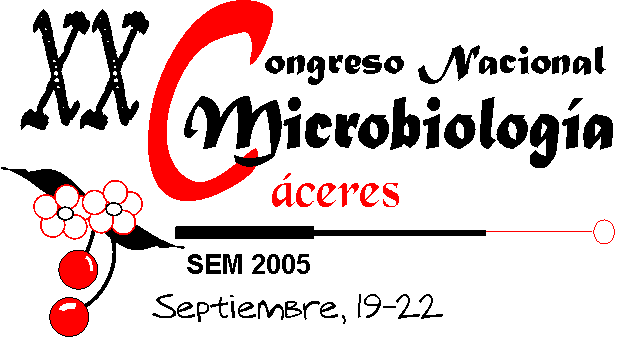

C - 459
1Secció de Microbiologia. Departament de Patologia i Terapeutica experimental. Facultat D’Odontologia. Universitat de Barcelona. . Feixa Llarga s/n 08907. Hospitalet de Llobregat. Barcelona. Spain. 2 Lehrsthul für Biotechnologie. University of Würzburg. Germany. Corresponding author: escriban2000@mixmail.com
Actinobacillus actinomycetemcomitans is a bacterial species including Gram negative, nonmotile, capnophilic short rods. It is considered as one of the most prominent pathogenic microorganism associated with periodontal diseases, mostly agressive periodontitis. The role of the bacterium is specially relevant in localized juvenile periodontitis and acute progressive periodontitis.
Gram-negative bacteria are surrounded by an external leaflet so called outer membrane. This membrane is formed by a double bilayer constituted by phospholipids and lipopolysaccharides and proteins. Outer membrane proteins (Omp) have some particular characteristics i.e. ability to form pores through which nutrients, as well as antibiotics penetrate the cell. Thus, they have many important functions with important consequences on almost all physiological functions.
By using electrophoresis in polyacrylamide gels denaturalizing we have been able to identify six major sarkosyl-insoluble outer membrane proteins (Omp) in a collection of fourteen different strains of A. actinomycetemcomitans. They were designated as Omp 100, Omp 64, Omp 39, Omp 29, Omp 18 and Omp 16, regarding their molecular masses and in agreement with other authors.
Among these proteins one of them, Omp 39, was supposed to be a porin, since its molecular weight is in the range of porin Mw. Thus, ability to form pores of such a protein was measured by using artificial black Planar Lipid Bilayers following the method of Benz. When experiments were done we measured a conductance of 0.75 nS in KCl 1M, this represents approximately a pore diameter of 0.73 nm.
Phenotypes in terms of antimicrobial susceptibility, of A. actinomycetemcomitans strains herein studied were determined by measuring the Minimal inhibitory concentrations of the most frequently used antibiotics. All strains resulted to be moderately resistant to clyndamicine. Although more experimental work should be done, the narrow pores formed by A. actinoomycetemcomitans porin could be the reason (or contribute to) clyndamicin resistance of this bacterial species.